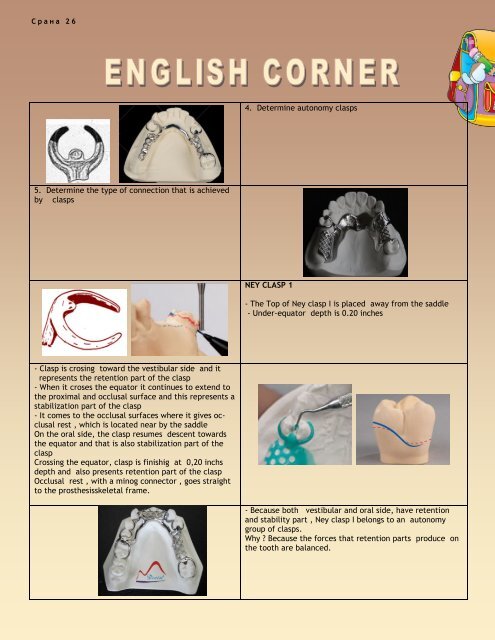You also want an ePaper? Increase the reach of your titles
YUMPU automatically turns print PDFs into web optimized ePapers that Google loves.
С р а н а 26<br />
4. Determine autonomy clasps<br />
5. Determine the type of connection that is achieved<br />
by clasps<br />
NEY CLASP 1<br />
- The Top of Ney clasp I is placed away from the saddle<br />
- Under-equator depth is 0.20 inches<br />
- Clasp is crosing toward the vestibular side and it<br />
represents the retention part of the clasp<br />
- When it croses the equator it continues to extend to<br />
the proximal and occlusal surface and this represents a<br />
stabilization part of the clasp<br />
- It comes to the occlusal surfaces where it gives occlusal<br />
rest , which is located near by the saddle<br />
On the oral side, the clasp resumes descent towards<br />
the equator and that is also stabilization part of the<br />
clasp<br />
Crossing the equator, clasp is finishig at 0,20 inchs<br />
depth and also presents retention part of the clasp<br />
Occlusal rest , with a minog connector , goes straight<br />
to the prosthesisskeletal frame.<br />
- Because both vestibular and oral side, have retention<br />
and stability part , Ney clasp I belongs to an autonomy<br />
group of clasps.<br />
Why ? Because the forces that retention parts produce on<br />
the tooth are balanced.













